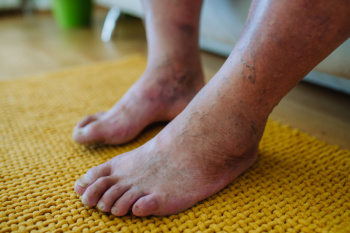
Diabetic patients can develop symptoms in their feet, such as numbness, tingling, burning sensations, slow-healing sores, or changes in skin color and temperature. These signs may indicate nerve damage or poor circulation, both common complications of diabetes. Proper care includes daily foot checks, gentle washing and drying, moisturizing dry areas, and wearing well-fitted shoes to prevent pressure points. Additionally, avoid walking barefoot to reduce the risk of injury. A chiropodist plays a key role in monitoring foot health, treating wounds, and managing nail or skin conditions to prevent serious complications. If you have diabetes, it is suggested that you schedule regular visits with a chiropodist to ensure your feet remain healthy and protected from diabetes-related damage.
Diabetes can cause serious problems in the lower limbs if proper preventive measures are not taken and diabetic wound care is not performed. If you would like to learn more about caring for diabetic feet, please consult with one of the chiropodists from The Footcare Centre. Our chiropodists can help you maintain the health of your lower limbs and your mobility.
Diabetes can lead to a host of foot and ankle complications, including:
Poor circulation
Peripheral neuropathy
Diabetic foot wounds and ulcers
Infection
Corns and calluses
Dry, cracked skin
Nail disorders
Hammertoes
Bunions
Charcot foot
If you have diabetes, you must be vigilant of any changes in your foot health. This is best done through daily foot inspections. Using a mirror to help you if necessary, look for any:
Cuts, scrapes, sores, or wounds
Bruising or discoloration
Swelling
Rash
Foul odor
Nail changes
Hair loss
Warmth and inflammation
Deformities
Lower limb pain
Strange sensations (numbness, tingling, burning, pins, and needles)
If you detect anything unusual, seek the care of a chiropodist as soon as possible. If you have any questions, please feel free to contact our office located in . We offer the newest diagnostic and treatment technologies for all your foot care needs.









